Review by Pete Vack
The task was not easy. Michele Casiraghi has chosen to document the Alfa Romeo 6C2300/2500s that were intended for sports use. To quote:
“This volume is dedicated to the diverse series of special [6C 2300/2500] cars and their sporting history. Over the span of almost 20 years, from 1934 to 1952, over sixty cars with custom bodies intended for sports use have been identified….Wherever possible, the cars have been identified by their chassis numbers.”
While this definition sounds fair, it is rather subjective as what constitutes one of these specials is not always clear. The cars identified also include Ermini and Nardi specials, even though the only Alfa components may have been the running gear and not the chassis. “It was not always possible to find [chassis number] information for all the models covered, and some are identified by the names of the drivers who raced them or the tuners or coachbuilders who were involved in creating them.”
It is, however, a brave attempt to separate the wheat from the chaff, so to speak, and come up with a more definitive list of the 6C 2300/2500 Alfas which could be considered race cars and furthermore provide brief race results as applicable to the model. A heady task indeed.
As we made a comprehensive list of the chassis numbers featured in the book, we were rather dismayed to find so many cars unaccounted for, either scrapped or requisitioned by the German army, or no longer licensed and tracked or simply listed as unknown.
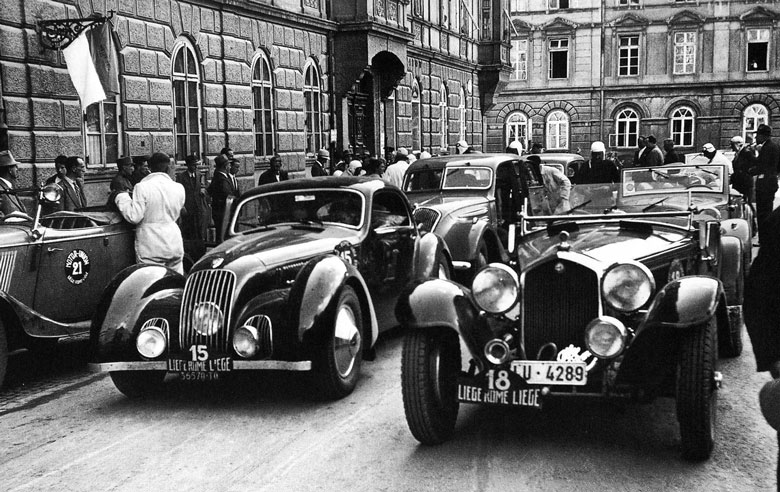
This stunning, advanced and beautiful Pinin Farina bodied Alfa 6C 2300 (N. 15 in the photo) was constructed in 1935 on chassis 700552. It was last recorded as being owned by famous race driver Felice Bonetto. Where is it today?
The author organizes the cars chronologically by type. Part I is devoted to the original solid axle first series 6C 2300 from about 1934 to 1935. With each series, he gives a brief model history, the races in which that series participated, then narrows the focus down to each chassis number providing photos and history as known. For Part I, six cars are listed, all being sold to private owners and raced throughout Italy. Of the six, only one definitely still survives.
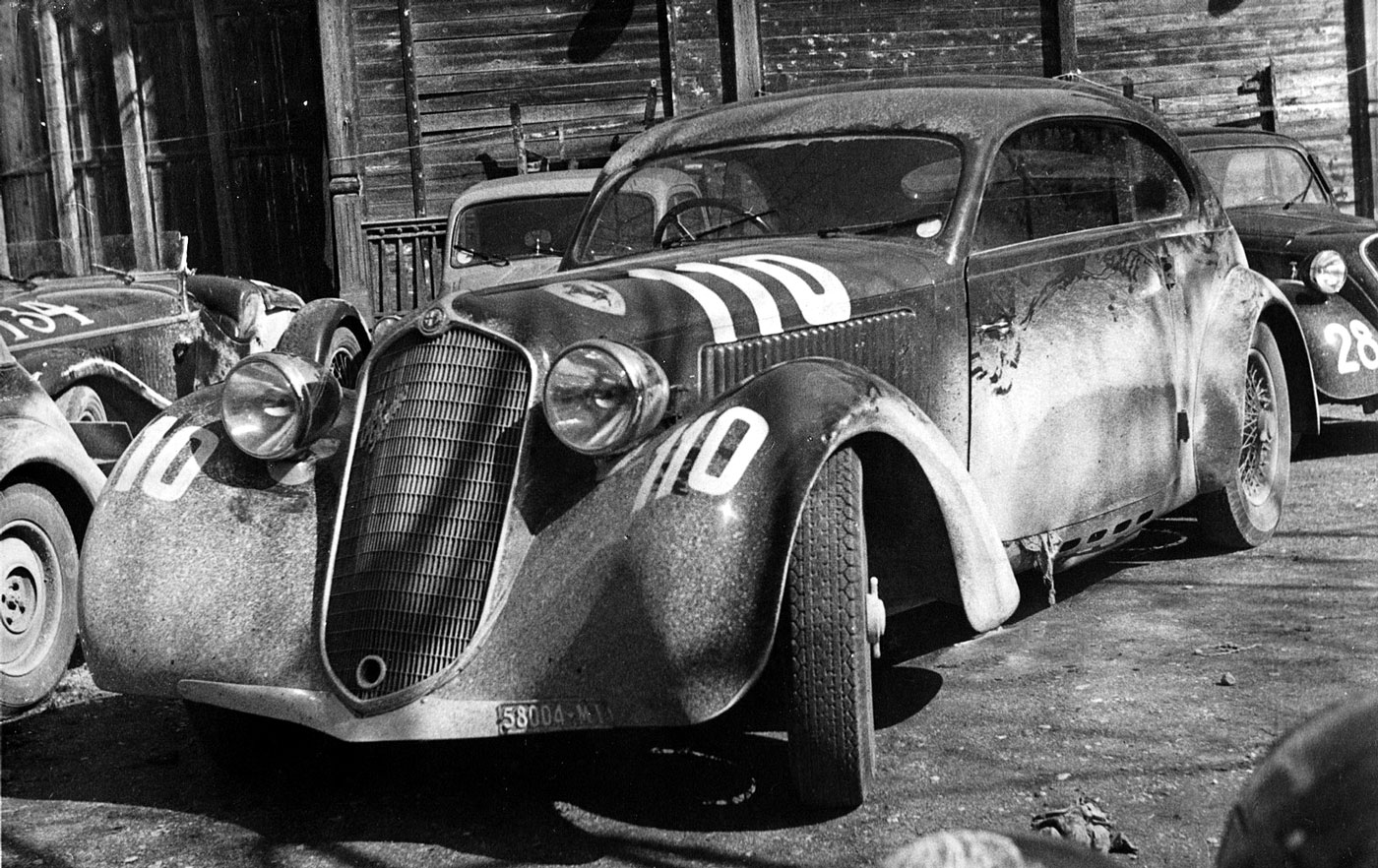
The 6C 2300 B here is a factory race car entered by Scuderia Ferrari in the 1937 Mille Miglia. A nice piece if it can be found. Chassis number is 813822 and last registered in 1948.
Part II follows with the 6C 2300 B series, which differed from the earlier version primarily by the use of independent rear suspension. Eleven are listed, and here we find at least two factory prepared (read Scuderia Ferrari) race cars, chassis, 813821 and 813822.
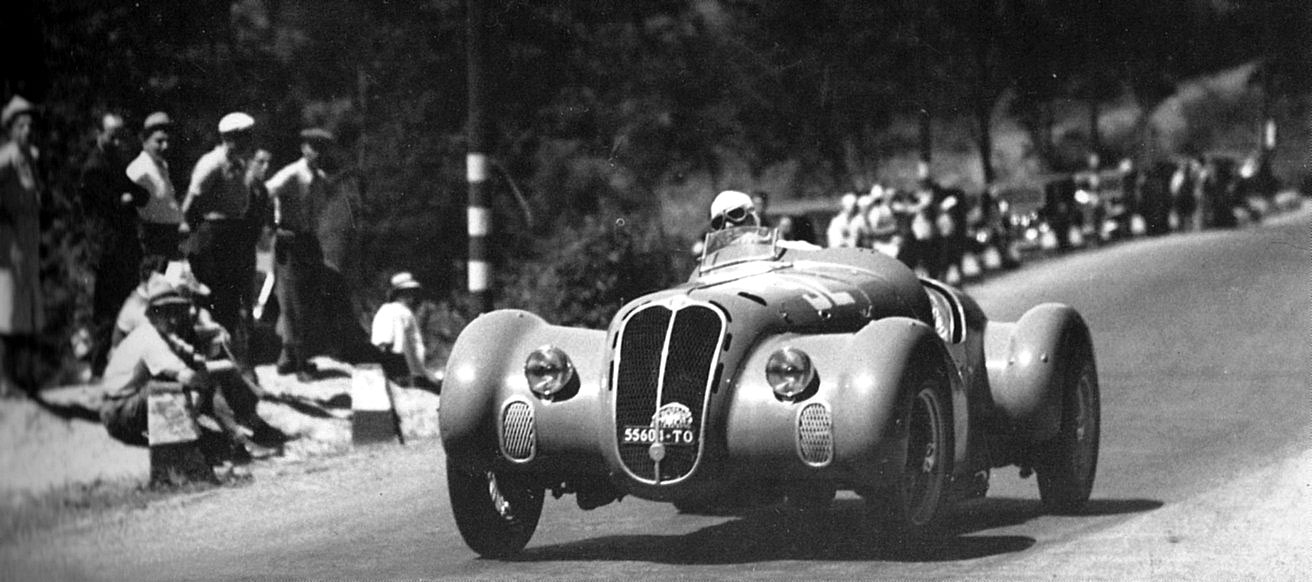
Piero Dusio of Cisitalia fame bought this 6C 2500 Spider, chassis 915011, and it was one of the fabled 256 cars as well. Here seen on the 1939 Corsa dei Colli Turinesi. Did it disappear?
The 6C 2500 cars are next up in Part III and more numerous. These were the Super Sports variety, and included the factory labeled internal number of 256 for the special “Alfa Corse” models. Author Casiraghi devotes a separate chapter to explain the 256 series, but we’ll let the experts determine what is and what is not included in the often elusive mark of the 256. Fourteen chassis numbers are found here including three built by the factory for the 1940 Mille Miglia. Maybe three of the fourteen are still in existence.
Less straightforward are the 6C 2500 Series II and III, built from 1942 to 1952. Part IV covers four factory chassis and another four cars constructed by firms like Ermini and others using part or all of the Series II chassis.
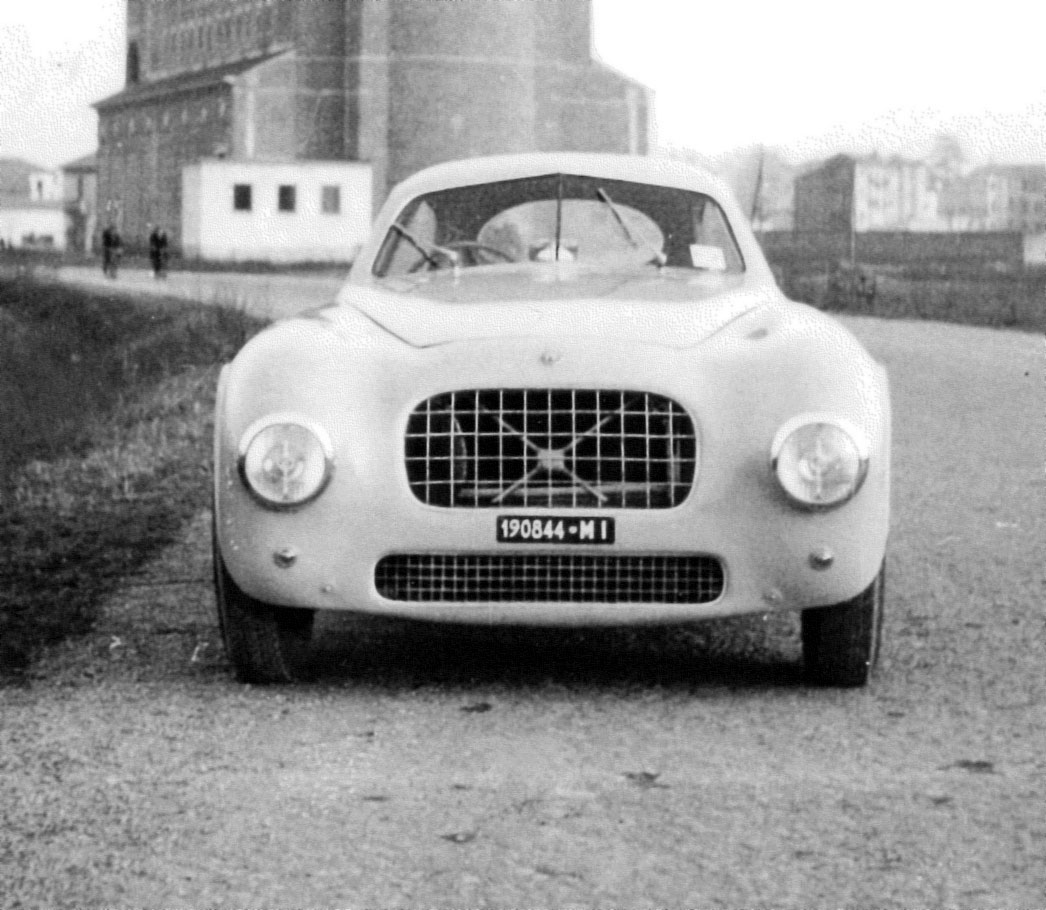
Presumably the third of the three 1950 Mille Miglia Alfa coupes, 920003 was badly damaged in an accident and was bodied by Colli in this Ferrari-like fashion. It was reportedly destroyed a few years later. Too bad as its sister car was sold for over 4 million USD in 2013.
Likewise, Part V addresses only three factory chassis (the same Mille Miglia cars covered by Dasse in Alfa Prototipi Volume 1) and then thirteen cars based on the chassis including five Nardi-Alfas. Eight chassis can be found to exist today.
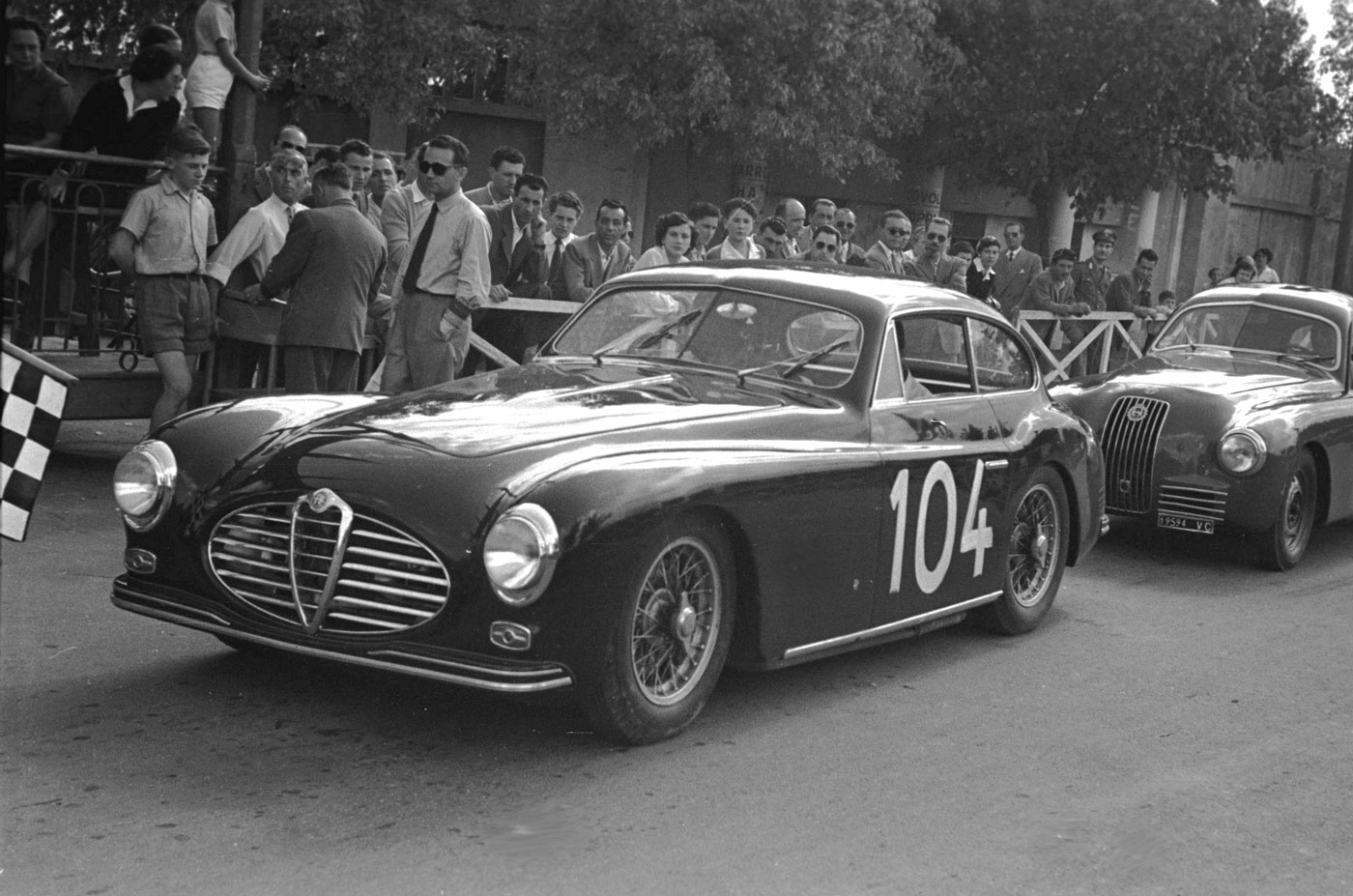
VeloceToday featured an Alfa powered Riva bodied Cattaneo coupe now in the U.S., but there were three. The second was bodied by Colli and a photo was found of the car at an event in 1951, above. A third was bodied by Ghia and recently restored. All three used 6C 2500 running gear with Gilco chassis.
The appendix includes a handy list of all the 6C 2300/2500 Alfas that have participated in the Mille Miglia.
In all, a wealth of information, and essential for those interested in the history of these often overlooked Alfa race cars. Anyone looking to purchase such an Alfa should have this as well.
Price:€ 38.00
CODE: 88-89108-47-5
Year of publication: 2023
Author: Michele P. Casiraghi
No. of pages: 240
Texts in: Italian and English
Image type: 156 black & white images
Format: 210mm x 210mm
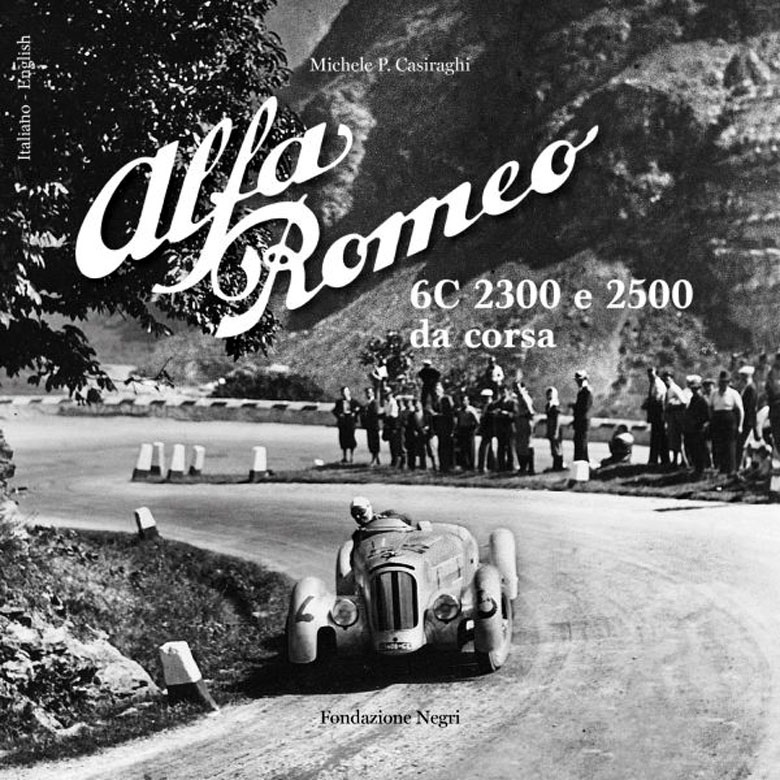
If I could turn back time, I would desire 24 hours behind the wheel of Pinin Farina C62300 #15 ! Remove those ugly driving lights and the true beauty appears.